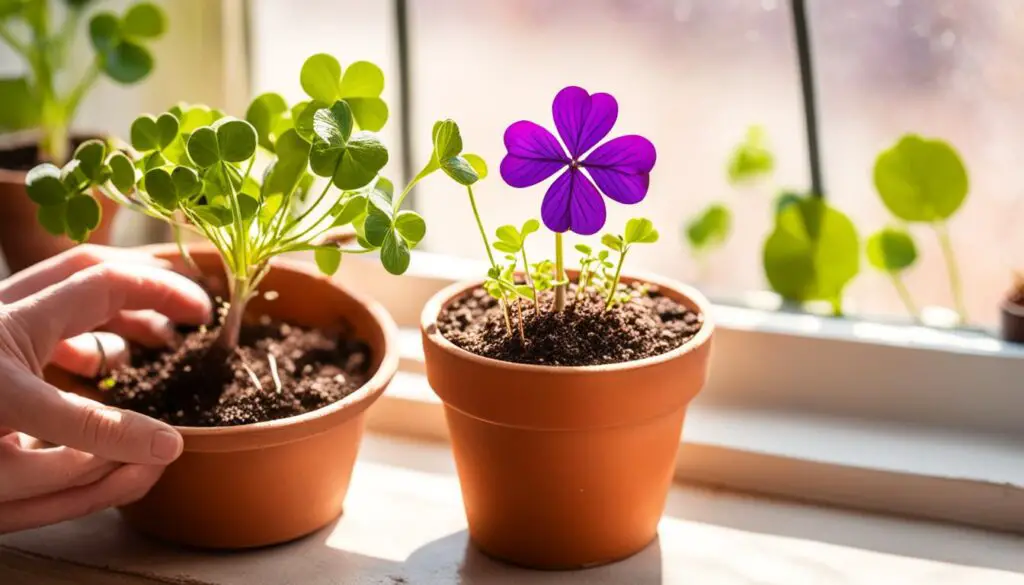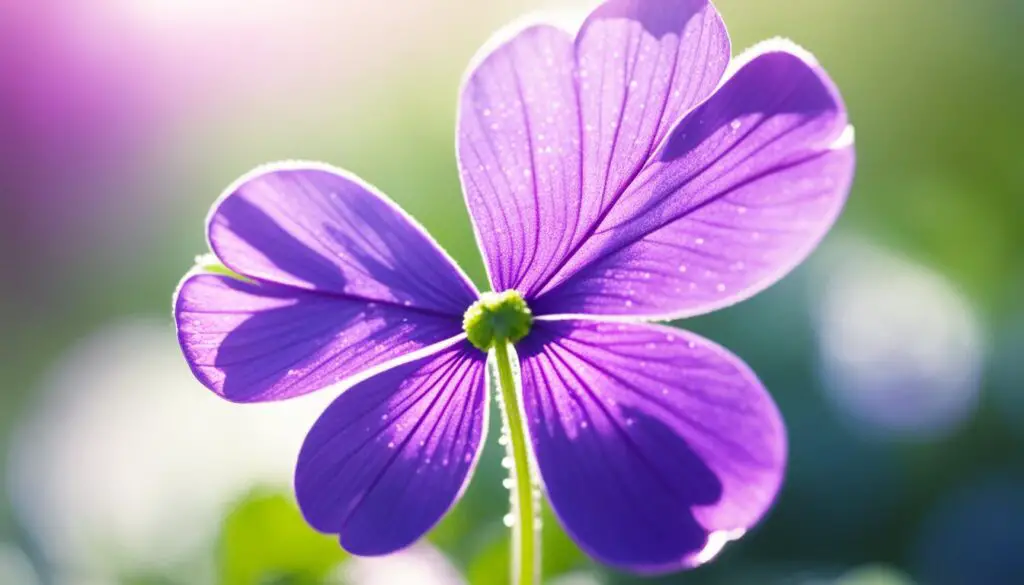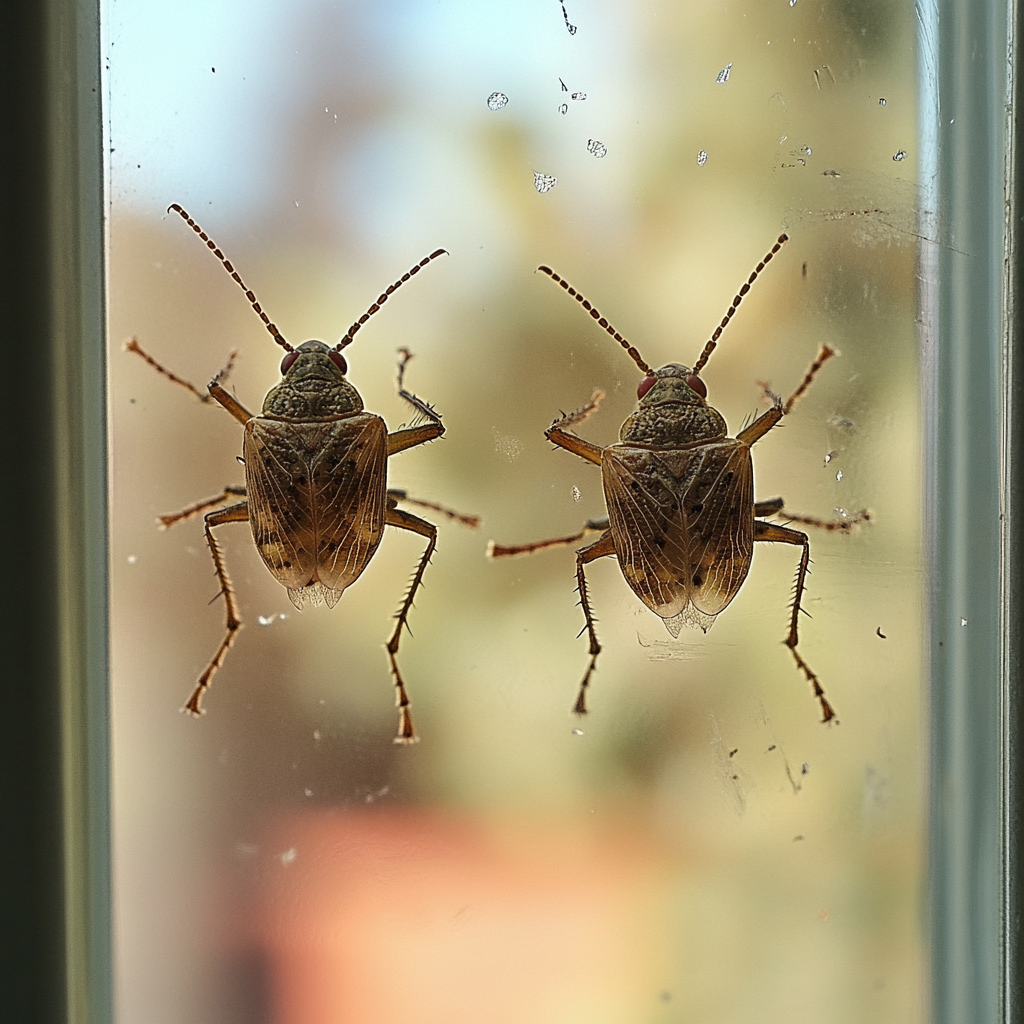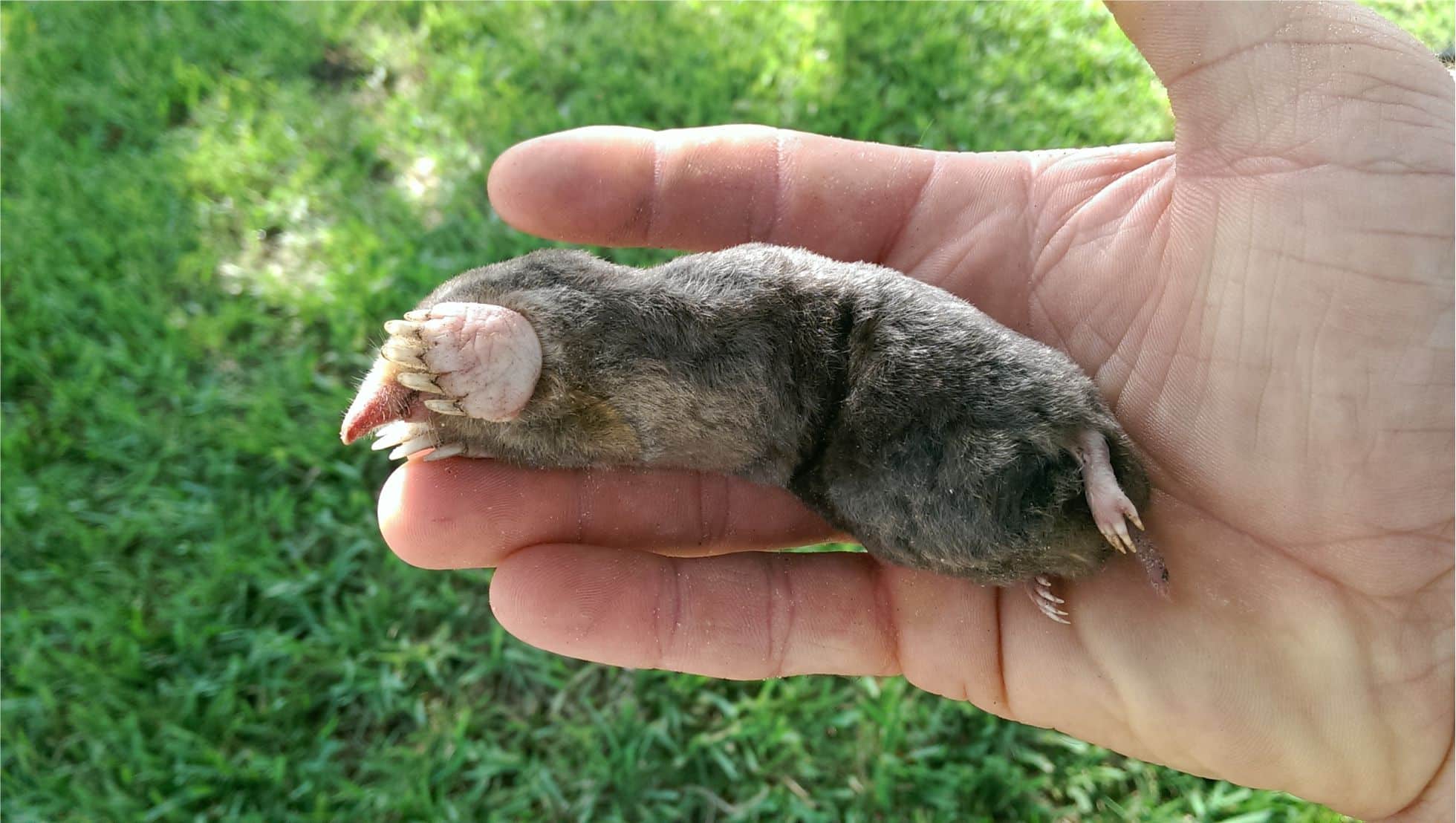I love exploring the world of rare and unique plants. The purple shamrock, or false shamrock, is one that stands out.
Its deep purple leaves look like butterfly wings. They grow in groups of three, making a beautiful sight.
The purple shamrock is amazing because it folds its leaves at night or on cloudy days. Then, it opens them again with the morning light. It also has tiny flowers that can be white, pink, or lavender.

Want to grow a purple shamrock? Keep a few things in mind. They need at least four hours of sun a day and do well in zones 8 to 11 (USDA).
They like temperatures between 60 and 75 degrees Fahrenheit and can bloom in spring, fall, and winter.
Remember, all parts of the purple shamrock are toxic to humans and pets. So, keep them away from curious kids and pets. With the right care, these plants can add magic to your garden or indoor space.
Key Takeaways
- Purple shamrocks thrive in at least 4 hours of daily sunlight.
- They are suitable for hardiness zones 8 to 11 (USDA).
- Ideal temperature range is between 60 and 75 degrees Fahrenheit.
- Flowers come in white, pink, or lavender colors.
- Purple shamrocks are toxic to people and pets.
Unveiling the Enchanting World of Purple Shamrocks
Botanical Profile and Characteristics
Enter the enchanting world of the purple shamrock, a true gem in the plant kingdom. Known as the false shamrock, it belongs to the Oxalis genus, the largest in the Oxalidaceae family.
Its leaves display a range of colors, from deep purple to nearly black, fluttering like butterflies.
The purple shamrock has a special behavior. At night, its leaves close up, like an umbrella. They reopen with the morning sun, adding magic to its care.
This plant also produces flowers in white, pink, or lavender, adding to its beauty. Its vibrant colors and leaf movements make it a favorite for those who love purple shamrock cultivation and unique shamrock varieties.
“The purple shamrock’s enchanting dance of leaves, from open to closed, is a true marvel of nature, captivating all who witness its mesmerizing performance.”
The purple shamrock is part of the Oxalis genus, offering many wonders for plant lovers. Its unique look and habits have made it a standout in vibrant shamrock horticulture.
Grow A Purple Shamrock and Care: Nurturing a Vibrant Beauty
Sunlight and Temperature Needs
To grow a beautiful purple shamrock, you need to pay attention to its light and temperature needs.
These plants love bright, indirect to bright, direct light. They don’t do well in low light, so make sure they get enough light to stay colorful and full.
The best temperature for purple shamrocks is between 65°F and 85°F (18°C and 30°C). Keep the temperature above 60°F (15°C) to keep your plants happy.
With the right light and temperature, you can grow a beautiful, vibrant shamrock horticulture at home or in your garden.
“The Purple Shamrock, scientifically known as Oxalis triangularis, originates from Brazil.”
It’s also key to keep the right humidity for your purple shamrock. They like normal room humidity, so you don’t need a special humidifier.
With the right light, temperature, and humidity, you can grow growing rare shamrocks and follow a shamrock care guide for success.

Embracing Variety: Other Shamrock Species to Explore
I’ve found that the purple shamrock (Oxalis triangularis) is just the start in the world of shamrock-like plants. The Oxalis genus, part of the Oxalidaceae family, has over 500 unique species. Each one has its own special traits and beauty.
There are more Oxalis varieties known as shamrocks beyond the purple one. These include Oxalis acetosella (wood sorrel or shamrock), Oxalis tetraphylla (four-leaved sorrel or lucky clover), and Oxalis lasiandra (Mexican shamrock or palm tree oxalis).
There’s also Oxalis adenophylla (Chilean oxalis or silver shamrock), Oxalis bowiei (Cape shamrock, Bowie’s wood sorrel, or red flower wood sorrel). Each species has its own unique features, from bright leaves to beautiful flowers.
Learning about these unique shamrock varieties has taught me how to care for them. Some like partial shade, while others need full sun.
Mixing these species and following good gardening tips can make your garden beautiful and full of life. It attracts bees and butterflies too. Whether you like the purple color or the delicate look of wood sorrel, exploring these plants adds beauty and interest to your garden.
FAQ
What is a purple shamrock?
A purple shamrock, also known as false shamrock, has deep purple leaves that look almost black. These leaves are triangular and grow in groups of three, making them look like butterflies.
How does the purple shamrock behave during different times of the day?
At night or on cloudy days, the purple shamrock’s leaves fold up like an umbrella. But they open again when the sun comes out in the morning.
What are the characteristics of the purple shamrock’s flowers?
The purple shamrock has tiny flowers that are white to pale pink or lavender in color.
What are the ideal growing conditions for a purple shamrock?
Purple shamrocks need bright indirect to bright direct light and a temperature between 65°F and 85°F (18°C and 30°C). They like moderate humidity and do well in normal room humidity.
Are there other types of shamrocks besides the purple shamrock?
Yes, there are several other Oxalis plants known as shamrocks. These include Oxalis acetosella (wood sorrel or shamrock), Oxalis tetraphylla (four-leaved sorrel or lucky clover), Oxalis lasiandra (Mexican shamrock or palm tree oxalis), Oxalis adenophylla (Chilean oxalis or silver shamrock), and Oxalis bowiei (Cape shamrock, Bowie’s wood sorrel, or red flower wood sorrel).



